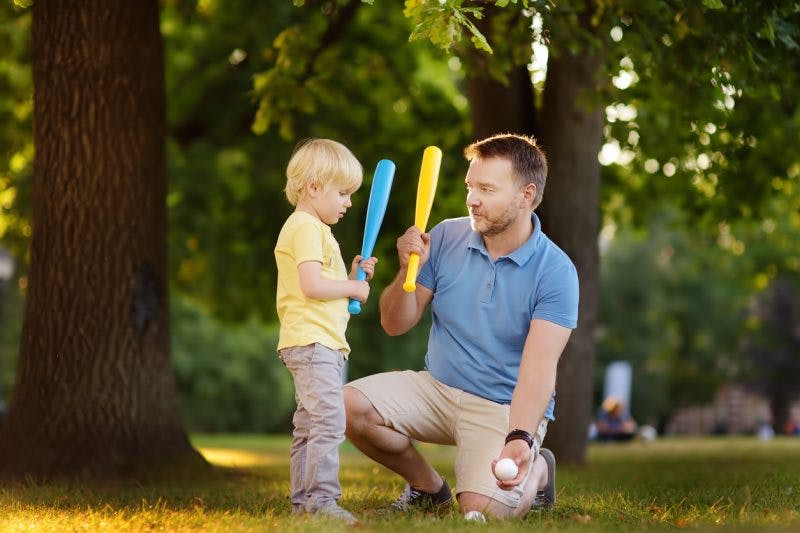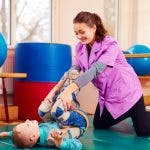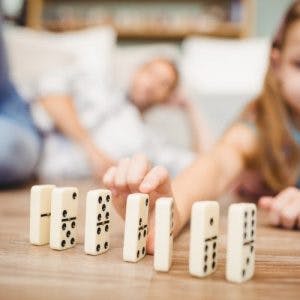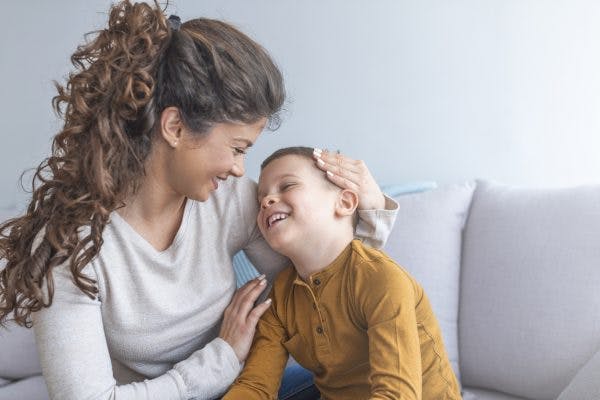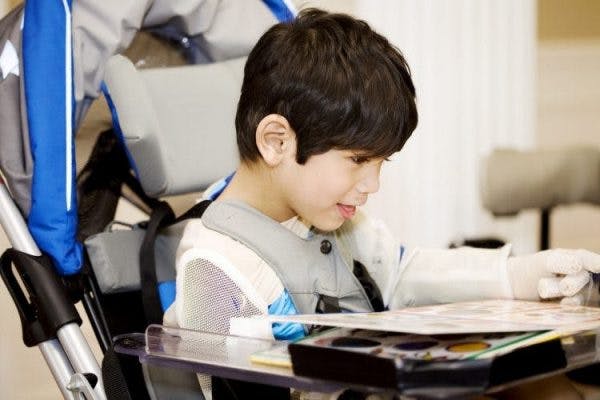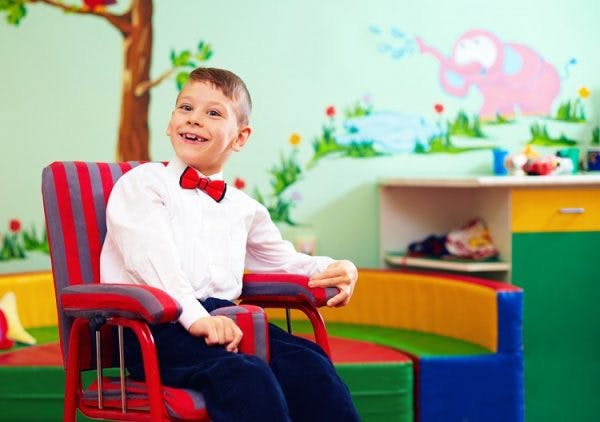Cerebral palsy refers to a spectrum of motor disabilities that result from brain damage occurring before, during, or shortly after birth. It causes stiff movements, poor posture, and difficulties with balance and coordination. Therefore, consistent movement and engaging exercise for kids with cerebral palsy is necessary to help lengthen tight muscles, increase range of motion and coordination, and improve overall mobility.
Due to their impaired movements, children with cerebral palsy tend to be less physically active, which increases their chances of developing health problems.
This article will recommend engaging exercises and activities to try with your child to boost physical activity levels and mobility.
How Much Exercise Do Kids with Cerebral Palsy Need?
Physical activity is an essential component of a healthy lifestyle. However, for children with cerebral palsy, it may be difficult or uncomfortable to engage in physical exercise on a regular basis.
Research recommends that children with cerebral palsy aim to get at least 60 minutes of physical exercise, 5 days a week. Although this may sound like a lot, not all exercise has to be boring. Physical activities can be just as beneficial (or even more so) than rote exercises.
Specific exercise recommendations, in terms of exercise type and duration, may vary by the child depending on their unique condition. To learn more about what physical activity goals may be most beneficial, speak with your child’s physical or occupational therapist. This helps target all the right areas to optimize your child’s motor functions.
Every case of cerebral palsy is different and each child will have varying goals. Therefore, having an individualized exercise regimen will help cater to your child’s unique needs.
Want 19 pages of CP recovery tips in PDF form? Click here to download our free illustrated ebook now (link opens a pop up for uninterrupted reading)
Range of Motion Exercises for Kids with Cerebral Palsy
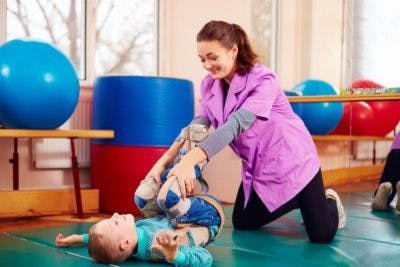
Passive Range of Motion Exercises for Kids With Cerebral Palsy
Passive range of motion exercises, in which a trained caregiver or therapist gently stretches the child’s body for them, are ideal for those with severe mobility impairments. Practice range of motion exercises for kids with cerebral palsy are a great way to reduce joint stiffness, promote circulation, and stimulate the muscles. Perform these at least twice a day and keep these exercises pain-free while avoiding forcing limbs past their natural resistance.
One tip – passive range of motion exercises may not be very engaging on their own, but pairing them with music can make them more motivating. Find ways to encourage children with less severe motor impairments to perform active range of motion exercises on their own as much as possible.
Active Range of Motion Exercises for Kids With Cerebral Palsy
If your child is able to do so, active range of motion exercises can be a great option to improve mobility. Some active range of motion exercises for kids with cerebral palsy may include:
- Neck rotations (rotate the head in circles clockwise and counterclockwise)
- Head turns (turning the head side to side)
- Shoulder shrugs (raise and lower your shoulders)
- Arm circles (spread your arms to the sides so that your body makes a T shape and then move the arms in circles forward and backward)
- Elbow extensions (bend and straighten your elbows)
- Wrist rotations (hold your forearm with your other hand to stabilize it and then move the hand in circles)
- Finger clenching (make a fist so that all your fingers curl in and then straighten them back out)
- Finger parting (join your fingers together so that they touching on the sides and then spread them out as far as you can)
- Marches (sitting or standing, bend at the hip to raise your knee up like you’re marching, alternating legs)
- Lateral leg raises (lie on your side, raise your top leg up as far as you can, then lower it)
- Knee extensions (sit on a chair and repeatedly bend and straighten the knees)
- Ankle rotations (rotate the ankles in circles)
Again, pair these exercises with music to make them more enjoyable.
Using these tasks as dance moves rather than exercises can make them fun and entertaining. For example, songs like Head and Shoulders, Knees and Toes, the Hokey Pokey, or popular YouTube motion songs by Danny Go! include many of these movements.
Adding music to otherwise boring exercises helps motivate children to keep moving every day and turns physical activity into fun instead of a chore.
Fun Physical Activities as Exercise for Kids with Cerebral Palsy
Exercise doesn’t have to be boring. In fact, the best way to engage and motivate your child to be more active is to incorporate play.
Let’s go over some fun physical activities your child can do for exercise.
Obstacle Course
Try setting up an obstacle course in your living room or outdoors. This doesn’t have to be anything fancy – start by placing some potholders or old washcloths on the floor to use as stepping stones. You can add other challenges, such as walking on a jump rope laid out in a zigzag pattern, stepping up to a step stool, crawling under the table, or tossing a ball into a laundry basket.
If an obstacle course gets too easy, change it up or try completing it in a certain time limit. Instead of walking, encourage your child to hop or balance on one foot at specific points for a challenge. Various toys can also be purchased to add to the fun, such as tunnels, balance beams, slides, or raised stepping stones.
By rearranging and adding new tasks to your obstacle course, this adaptable activity can keep your child’s attention and be used again and again to boost physical activity and mobility.
Dancing

Dancing is a great way to practice moving multiple parts of the body at once. Children love songs with corresponding dance moves like the Cha Cha Slide, Head and Shoulder Knees and Toes, Hokey Pokey, and Macarena.
You can also play freeze dance! The rules are simple. When the music is on, you dance, but when it stops, you have to freeze! Whoever moves, loses. The anticipation of waiting for the song to stop keeps the child engaged.
MusicGlove
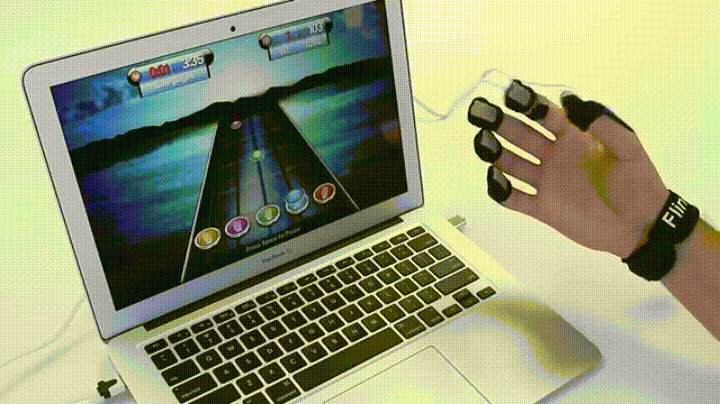
MusicGlove is a neurorehab device that combines gaming, hand therapy, and music to make improving fine motor skills fun.
The idea of the game is to make O’s with each of your fingers. The keys on the screen are synchronized to match the beats in the music.
Children are so engaged in the game that they don’t even realize how many repetitions they’re performing, which is key for promoting neuroplasticity and boosting hand function.
While this is not ideal for promoting gross motor skills, this is a great way to improve hand mobility and add some movement into your child’s day if their mobility is significantly limited.
Balloon in the Air (AKA Hot Lava)
This simple game is a great way to keep children with cerebral palsy moving around.
All you need to do is keep a balloon (no helium) from touching the floor (or “hot lava”) at all costs.
While playing this game with your child, try to steer the balloon away from your child so that they must move around to get to it before it falls into the floor “lava”.
To make it more challenging, suggest things like, “How about we can only touch the balloon with our right hand, or feet?”
Swimming
Getting into the pool is an excellent way for your child to practice walking and strengthen their muscles.
The buoyant force of water is what makes people feel so light in water. This will take a lot of pressure off the joints and allow your child to focus on moving and/or walking with correct form.
Water also has viscosity, which is what makes it difficult to move really fast in water. This natural resistance can help strengthen your child’s muscles.
There are all sorts of different exercises and activities your child can do in a pool.
They can hold onto a boogie board and kick their feet, balance on a pool noodle, practice walking, or even just splash around. As long as your child is moving, the properties of water can help improve motor function.
Adaptive Sports
There are tons of adaptive sports for children with cerebral palsy to participate in.
From basketball and soccer to cheerleading and horseback riding, nearly every sport can be adapted to accommodate your child’s abilities.
This can help your child learn how to play with others, work towards their goals, and enjoy an active lifestyle.Check out Move United’s adaptive sport program locator to find out more about what types of adaptive sports are available in your area.
Bike Riding
Riding a bike is an effective way for children with cerebral palsy to develop more strength in their legs and break a sweat, boosting their cardiovascular function as well as their mobility and coordination.
Having training wheels or even using a tricycle will help keep your child balanced and prevent falling. Pedals with straps can also help keep your child’s feet from sliding off.Younger children may enjoy using a balance bike, which is propelled by using the feet to push off the ground. Arm-powered bicycles, such as the RadioFlyer Cyclone, can also be a good way for children with limited lower body function to build endurance.
Go to a Playground
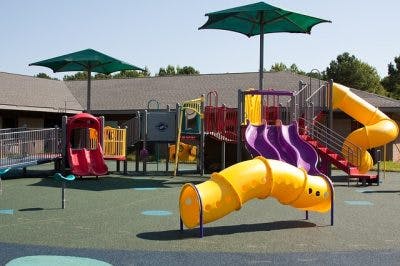
Going to the park and letting your child play on the playground is an effortless way to encourage physical activity.
They can use their muscles to climb, kick their legs back and forth on the swings, and run around. Some playgrounds have adaptive swings so even older children with balance difficulties are still able to swing. Playing on a playground is also great for children’s sensory systems!
Scavenger Hunt
Hide some items around the house and have your child go on a mini scavenger hunt looking for them.
Place the items in unexpected or hard to reach places that will have your child on their toes, knees, reaching, opening doors and cabinets, and moving objects around. This can be adapted to be as easy or difficult as your child needs.
The Best Exercises for Kids with Cerebral Palsy
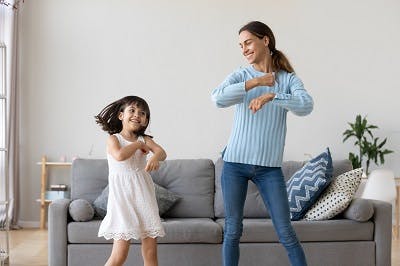
Ultimately, the best exercises for kids with cerebral palsy are the exercises that will keep them moving.
Forcing your child to go to physical therapy and perform manual exercise after exercise is only going to make them bored. However, many pediatric physical therapists do try to integrate fun activities into their sessions, so don’t be afraid to encourage physical therapy when needed.
By encouraging your child to play and do activities that they enjoy, they’ll naturally become more active.
The most important part of getting a child to exercise is to focus on what they can do rather than what they can’t.By moving around and being active, research shows that children with cerebral palsy can have improved flexibility, strength, sleep quality, and self-esteem. Regular physical activity can also reduce the risk of experiencing obesity, pain, fatigue, loss of strength, balance, and limited physical fitness as individuals age..Try these activities with your child and see for yourself how effortless it can be to keep them engaged and physically active.
